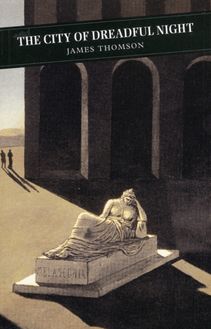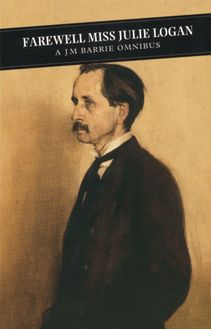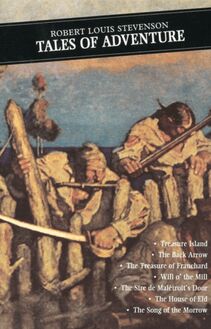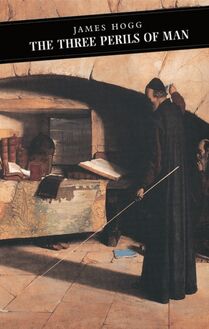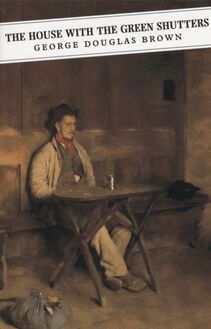Tales of the South Seas , livre ebook
429
pages
English
Ebooks
2010
Vous pourrez modifier la taille du texte de cet ouvrage
Obtenez un accès à la bibliothèque pour le consulter en ligne En savoir plus
Découvre YouScribe en t'inscrivant gratuitement
Découvre YouScribe en t'inscrivant gratuitement
429
pages
English
Ebooks
2010
Vous pourrez modifier la taille du texte de cet ouvrage
Obtenez un accès à la bibliothèque pour le consulter en ligne En savoir plus
Publié par
Date de parution
01 juillet 2010
Nombre de lectures
0
EAN13
9781847675224
Langue
English
Publié par
Date de parution
01 juillet 2010
Nombre de lectures
0
EAN13
9781847675224
Langue
English
Robert Louis Stevenson
TALES OF THE SOUTH SEAS
Island Landfalls
The Ebb-Tide
The Wrecker
Edited and Introduced by
JENNI CALDER
Contents
INTRODUCTION
LETTERS
To Charles Baxter 6 ix 1888
To Thomas Archer xi 1888
To R.A.M. Stevenson ii 1889
To Adelaide Boodle 6 iv 1889
To Sidney Colvin vi 1889
To Sidney Colvin 22 viii 1889
To Sidney Colvin x 1889
To Sidney Colvin 2 xi 1890
To Henry James 29 xii 1890
To Sidney Colvin xii 1891
IN THE SOUTH SEAS
Making Friends
The Maroon
Depopulation
The Story of a Plantation
A House to Let in a Low Island
Butaritari
Around Our House,
A Tale of a Tapu
Husband and Wife
FICTION
The Bottle Imp
The Isle of Voices
The Beach of Falesá
Introduction
It was ill health that drove Robert Louis Stevenson away from Scotland. It was an urge for new and adventurous places and experiences that drew him to the Pacific. In June 1888 he and members of his family sailed out of San Francisco Bay on the schooner yacht Casco . For the next six and a half years, until his death on 3 December 1894, Stevenson was never out of Pacific regions.
For the first two of those years he wandered from island to island, on the Casco , the Equator and the Janet Nichol , and spent some time in Australia. It was hopeful voyaging, relished for its own sake, and most of the time with the bonus of good health. Sometimes there were pauses of weeks or months, stays occasioned by personal inclination, or the exigencies of Pacific trade, Pacific weather or Pacific ships. Wherever he was, and for whatever reason, Stevenson was continually alert to sights, sounds and happenings that were new, fresh and vivid. Many of his letters catch the exoticism and excitement of it all.
This climate; these voyagings; these landfalls at dawn; new islands peaking from the morning bank; new forested harbours; new passing alarms of squalls and surf; new interests of gentle natives, – the whole tale of my life is better to me than any poem. 1
But Stevenson was not carried away by the romance and adventure of the Pacific, although some of his published work up until that time might have suggested such a response. Another letter, written within days of the one above, suggests his awareness of some of the contradictions and difficulties of the islands.
The Pacific is a strange place; the 19th century only exists there in spots: all round, it is a no man’s land of the ages, a stir-about of epochs and races, barbarisms and civilisations, virtues and crimes. 2
The Pacific was a challenge because it not only lived up to his most extravagant ideas of adventure, the ideas that had flowered in Treasure Island , but it also presented him with realities that were tantalising and instructive. His understanding of human nature and human history, which is so apparent in Kidnapped , in Strange Case of Dr Jekyll and Mr Hyde , in stories such as ‘Thrawn Janet’ and ‘The Merry Men’, was sharpened and extended.
By the end of 1890 Stevenson, his wife Fanny, and a fluctuating entourage were more or less settled in Vailima, the home he built near Apia on the Samoan island of Upolu. Throughout these years, whether at sea, or encamped in a palm-thatched hut, or living in squalor or in splendour – he sampled both extremes – at Vailima, he was writing. Both the world that he had left and the world in which he was now living were the subject of his pen.
The content of his writing was more diverse and wide-ranging than at any other time of his life. In the early months of his travels he was working on The Master of Ballantrae , which he had begun in a sub-arctic winter spent in the Adirondacks in New York State, and finished in a beach house at Waikiki. But although at this distance he could recreate Scotland and Scots, Scottish habits and Scottish speech, the Pacific environment equally commanded his attention. He kept a journal, and when he could he wrote letters. The opportunities to send them were irregular, so there were necessarily long silences. Stories began to suggest themselves, plots and people unfolded from the endless fascination of the Pacific. Yet all the time Scotland was never very far from his mind.
Soon he found himself concerned with much more than simply recording impressions. His interest in the peoples and cultures he encountered became involvement, both personal and, after a while, political. This is reflected in his writing, and worried greatly those at home who would have been happier to see him as a spinner of the picturesque, making delightful capital out of exotic sensations, than as an investigator of colonialism and its impact. But Stevenson could not close his eyes to what he saw going on around him, especially as it provided him with such rich material for continuing an exploration of moral ambiguity that was already a primary current in his work.
He began to write fiction directly inspired by his South Sea experience: The Wrecker , in collaboration with his stepson Lloyd Osbourne, The Ebb-Tide , begun as The Pearl Fisher with Lloyd, set aside and later worked over again by Stevenson alone, the short stories ‘The Bottle Imp’ and ‘The Isle of Voices’ aimed at a Polynesian audience, and the masterly novella The Beach of Falesá . At the same time his growing understanding of expansionist politics and of the native Polynesians led him to engage with the warring interests of the colonial powers in the Pacific. Inevitably, he wrote about that too.
Stevenson’s interest in Samoa and the political situation there had been aroused during a six month stay in Hawaii. There he spent many enjoyable and interesting hours in the company of King Kalakaua, a convivial, extravagant and plausible figure who consumed quantities of champagne and had serious if ambivalent convictions about traditional Polynesian values. Kalakaua had an interest in Samoa, for he felt that a possible solution to colonial squabbling could be that he should take the islands under his wing. At this time Samoa was uneasily supervised by a trio of powers – Germany, Britain and the United States – a situation created by the 1868 Treaty of Berlin, the great nineteenth-century colonial carve-up. Of the three, Germany dominated, both politically and economically, the political influence owing a great deal to Germany’s long-established economic presence.
Stevenson was outraged by the political manoeuvrings and manipulations of all three powers, none of which showed much regard for the needs or traditions of the Samoans. His indignation was sharply expressed in a series of letters to The Times which rehearsed, with an ironic wit that surely owed something to his Edinburgh legal training, a tale of imperialist treachery and doublethink. Once in Samoa Stevenson openly allied himself with the chief Mataafa, a man for whom he had great personal regard and political respect. Mataafa was the main rival to the German-backed puppet chief Malietoa. The British, while recognizing privately Mataafa’s claims, disliked him because he was a Catholic, and were anyway reluctant to disturb a situation that suited them quite well. Stevenson was regarded as an interfering innocent, causing trouble through his naive idealism – words often used to dismiss the awkwardly honest. The situation erupted into war in July 1883, much of the conflict enacted literally in the Stevensons’ back yard. Not content with sending lengthy correspondence to The Times Stevenson produced his own account of the situation and the background to the conflict in a book which he called A Footnote to History .
We do not usually think of Stevenson as being either a ‘straight’ historian or a political commentator, but there is clear evidence of his attraction to historical fact. An interest in Scottish history was reflected in more than his fiction and essays: he had applied for the Chair of History and Constitutional Law at Edinburgh University, a post for which he was academically ill-qualified and didn’t get. Nevertheless, the intellectual and psychological challenge of Scotland’s past always appealed to him, and more significant, perhaps, was his project to write a history of Scotland.
In Samoa Stevenson’s involvement in events and his determination to set the record straight was as much the result of his highly developed sense of justice as of the magnetism of historical fact. He was witness to words and actions that were hypocritical, deceitful, and manipulative. He could not stand back from such a state of affairs. He felt a moral obligation to commit to paper – his only effective weapon – his understanding of events. But amongst his friends and associates at home there was alarm. At an early stage in his career Stevenson had been identified as a torch-carrier for a revitalised fiction. In 1878 Leslie Stephen, a highly respected member of the literary establishment, had written to Stevenson saying that he was on the lookout for a new novelist, a Scott or a Dickens or a George Eliot, suggesting that perhaps Stevenson could be the answer. It was an extraordinary profession of faith in a young man who was in the early stages of his literary career, and that aura, the feeling that he was destined for great things, clung to him. From the other side of the world it looked as if Stevenson was spending his time in wild and ill-conceived political adventures with a gang of savages. It did not conform with an image of him as not merely a serious novelist, but as the saviour of English literature at a time when it was judged to be in the doldrums.
What Stevenson realized was that such adventures were not only the stuff of history, they were the stuff of fiction. Although he had gained a reputation as a fine weaver of imaginative tales he was no ivory-tower fabulist. To write he had to live, and for the first time in his life he was well and strong enough to throw himself into the thick of things, whether it was the struggle against the jungle growth on his Vail
